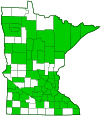red-legged grasshopper
(Melanoplus femurrubrum)
Conservation • Description • Habitat • Ecology • Distribution • Taxonomy
Conservation Status |
|
|||||||
| IUCN Red List | not listed |
|||||||
| NatureServe | N5 - Secure |
|||||||
| Minnesota | not listed |
|||||||
Description |
||
Red-legged grasshopper is a medium-sized, spur-throated, short-horned grasshopper. It is probably the most commonly encountered grasshopper in northern United States and southern Canada. It is especially abundant in southern Minnesota and Wisconsin. It is a strong flyer, commonly flying 30 to 40 feet when flushed. It is the most abundant species of grasshopper in the eastern United States. The body is dark brown to greenish or reddish-brown. The underside is often bright yellow. There is a dark stripe behind each eye the continues onto the pronotum and ends abruptly at the hindmost ridge (principle sulcus). There is a distinct, spiny bump (spur) at the base of the neck, between the base of the forelegs. The antennae are red or reddish-brown and are no more than ½ the length of the body. On the middle pair of legs, the foot (tarsus) is divided into two segments. On the hind pair of legs, the narrow upper portion (the outer face) of the hind femur is dull yellow, is not banded, and usually becomes gradually darker from the base to the tip. The narrow lower portion (the inner face) of the hind femur is yellow. The middle portion of the femur, the broad area between the outer face and inner face, is grooved in a distinct herringbone or chevron pattern. The hind tibia is bright red. The lower end plate beneath the genitalia (the subgenital plate) is bulbous. The pair of long appendages on the last abdominal segment (cerci) are long and pointed, but this is not visible without a hand lens. The wings are long, projecting beyond the tip of the abdomen when at rest. |
||
Size |
||
Male: ⅝″ to 15 ⁄16″ (17 to 24 mm) Female: 13 ⁄16″to 1⅛″ (21 to 29 mm) |
||
Similar Species |
||
| Migratory grasshopper (Melanoplus sanguinipes) hind tibia are bluish-green or red. The subgenital plate is notched. The cerci are shorter and are rounded. | ||
Habitat |
||
Prairies, woodland edges, wetlands, roadsides, croplands, gardens, and disturbed areas |
||
Ecology |
||
Season |
||
July to October |
||
Behavior |
||
|
||
Life Cycle |
||
The female thrusts its ovipositor into sod and deposits a pod containing 20 to 26 eggs. The pods are about ¾″ long and ⅛″ to 3 ⁄16″ wide. The female continues depositing egg pods in a scattered pattern, ultimately laying up to 300 or more eggs. The eggs hatch in the spring when plants are green over a period of about 52 days. The nymphs mature into adults in about 40 days. Due to variations in soil moisture and temperature nymphs can be found throughout the summer. In years of drought adults develop longer wings which enable them to migrate long distances. |
||
Nymph Food |
||
Shoots and other easily digested parts of the same plants that adults feed on. |
||
Adult Food |
||
A wide variety of forbs and grasses, including crops such as corn, alfalfa, soybeans, small grains, tobacco, and vegetables. |
||
Distribution |
||||
|
Sources Haarstad, J. 1990. The Acrididae of Minnesota. Final report submitted to the Minnesota Department of Natural Resources. 28 pp. |
|||
| Southeastern Minnesota is part of the 78,000 square mile center of distribution for the red-legged grasshopper. Conditions in this area are especially favorable, the grasshopper is especially abundant, and outbreaks are frequent. It is one of the most commonly encountered grasshoppers in this area. |
||||
| 11/25/2022 | ||||
Occurrence |
||||
Common to abundant. Crop pest. |
||||
Taxonomy |
|||
Order |
Orthoptera (grasshoppers, crickets, and katydids) | ||
Suborder |
Caelifera (grasshoppers, locusts, and allies) | ||
| Infraorder | Acrididea (grasshoppers) | ||
Superfamily |
Acridoidea (short-horned grasshoppers and locusts) | ||
Family |
Acrididae (short-horned grasshoppers) | ||
Subfamily |
Melanoplinae (spur-throated grasshoppers) | ||
Tribe |
Melanoplini | ||
Genus |
Melanoplus (North American spur-throated grasshoppers) | ||
The second part of the scientific name (species epithet) is femurrubrum and means “red femur”. This is a misnomer. It is the tibia, not the femur, that is red on this species. |
|||
Synonyms |
|||
|
|||
Common Names |
|||
redlegged grasshopper red-legged grasshopper |
|||
Glossary
Femur
In insects, the largest, most robust segment of the leg, coming immediately before the tibia. In humans, the thigh bone.
Pronotum
The exoskeletal plate on the upper side of the first segment of the thorax of an insect.
Tibia
The fourth segment of an insect leg, after the femur and before the tarsus (foot). The fifth segment of a spider leg or palp. Plural: tibiae.
Visitor Photos |
|||||
Share your photo of this insect. |
|||||
| This button not working for you? Simply email us at info@MinnesotaSeasons.com. Attach one or more photos and, if you like, a caption. |
|||||
Alfredo Colon |
|||||
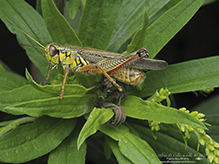 |
|||||
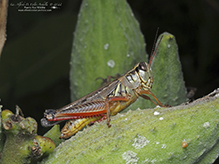 |
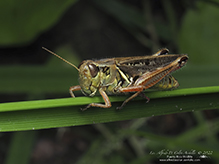 |
||||
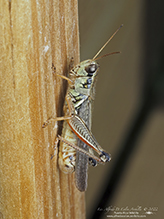 |
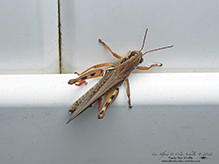 |
||||
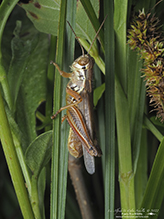 |
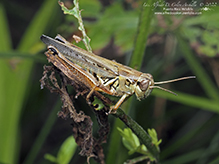 |
||||
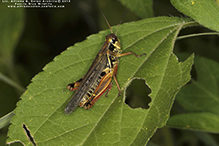 |
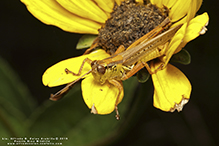 |
||||
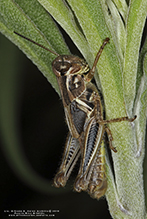 |
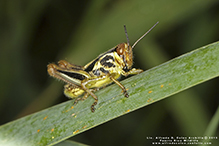 |
||||
Kirk Nelson |
|||||
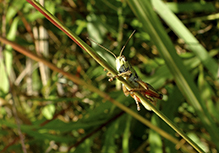 |
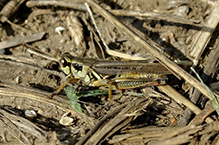 |
||||
MinnesotaSeasons.com Photos |
|||||
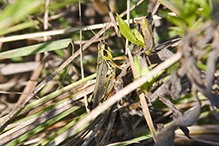 |
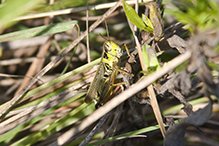 |
||||
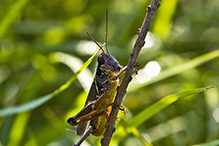 |
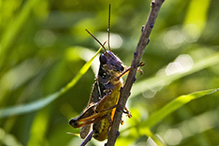 |
||||
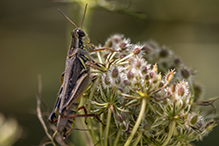 |
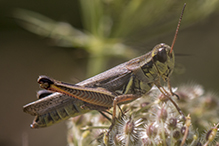 |
||||
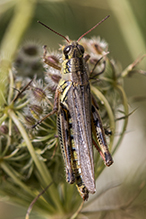 |
|||||

Visitor Videos |
|||
Share your video of this insect. |
|||
| This button not working for you? Simply email us at info@MinnesotaSeasons.com. Attach a video, a YouTube link, or a cloud storage link. |
|||
Other Videos |
|||
| Red-legged Grasshopper (Acrididae: Melanoplus femurrubrum) Nymph Carl Barrentine |
|||
About
Uploaded on Jul 6, 2010 Photographed at the Turtle River State Park, North Dakota (06 July 2010). |
|||
| Red-legged Grasshopper Nymph (Acrididae: Melanoplus femurrubrum) Male Carl Barrentine |
|||
About
Uploaded on Jul 28, 2011 Photographed at Grand Forks, North Dakota (28 July 2011). Thank you to David Ferguson (@Bugguide.net) for confirming the identity of this specimen as well as identifying the sex! |
|||


Created 9/13/2009
Last Updated:
